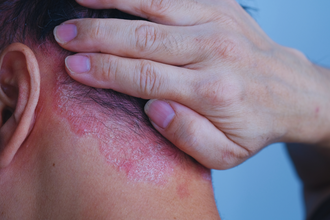
First seen on Dermascope.
Today the public has more information than ever before about the dangers of ultraviolet radiation and, yet, the statistics surrounding skin cancer is staggering. It is alarming, in fact, because it is a type of cancer that is quite preventable – yet, the numbers climb.
As we just came out of Melanoma Awareness month (May), I am sure happy that a few more people have a better awareness as we head into warmer months. The question is, if we as the industry know what to look for in our clients, can we recognize warning signs and alert our clients so they can get a medical assessment for suspicious lesions?
TYPES OF SKIN CANCER
There are three major types of skin cancer, melanoma, basal cell carcinoma, and squamous cell carcinoma. Less common skin cancers include kaposi sarcoma, merkel cell carcinoma, and sebaceous gland carcinoma.
Melanoma is the most dangerous type of skin cancer, with Australia and New Zealand scoring the highest rates of melanoma in the world.
According to the Skin Cancer Foundation, “If melanoma is recognized and treated early, it is almost always curable, but if it is not, the cancer can advance and spread to other parts of the body, where it becomes hard to treat and can be fatal. While it is not the most common of skin cancers, it causes the most deaths. Melanoma kills an estimated 9,320 people in the United States annually. Of those, 5,990 will be men and 3,330 will be women.”
WARNING SIGNS OF MELANOMA
If there is a spot that just looks different compared to all the other spots on the skin (the ugly duckling), it is a sign that the spot might be worth getting checked. The ABCDE rules stand for:
- Asymmetry: one half does not match the other half
- Border: irregular, ragged, notched, or blurred edges
- Color: the color is not the same all over
- Diameter: the spot is more significant than six millimeters across (about one-fourth of an inch – the size of a pencil eraser)
- Evolving: size, shape, or color of the mole is changing
When moles change – in particular: turn darker, start to bleed, or show other secretions or start to itch or develop a satellite lesion – a doctor should be consulted. Moles on palms of hands, soles of feet, and on genitalia show a higher incidence of malignancy.
Squamous cell carcinoma and basal cell carcinoma have the following warning signs over and above that of melanoma:
- Open sore that does not heal
- Persistent itchy patch on the skin – typically on the legs, chest, or shoulders
- Clear, pearl-like, red, pink, or white nodules; they can also be tan, brown, or black, particularly in darker skin, and are often mistaken as a mole.
Squamous basal carcinoma and basal cell carcinoma are typically found on the face – commonly the ears, nose, or lips. One of my physician clients shares with me that he sees it most commonly in patients who are farmers and those who enjoy activities like fishing, hunting, and golfing.
RISK FACTORS
Some people carry a higher risk of developing skin cancer in their lifetime and other risks are brought about by lifestyle choices. Factors that may increase the risk of skin cancer are:
- fair skin and/or the redhead gene (MC1R-gene)
- history of sunburns
- excessive sun exposure
- sunny or high-altitude climates
- moles
- precancerous skin lesions
- family history of skin cancer
- personal history of skin cancer
- weakened immune system
- exposure to radiation
- exposure to certain substances
TREATMENTS
Treatments include surgery, long-term medications, chemotherapy, immunotherapy, standard excision (with reoccurrence rate as high as 50%), and radiation. These treatments often leave the individual disfigured if the disease is not fatal.
PREVENTION
Since skin cancer is so preventable, it is obvious to focus on prevention. As aestheticians, we can play a proactive role in making clients aware of what we see, especially in those areas they may not be able to see on their skin very well. While we are at it, don’t you think it makes sense to give them information about how they can protect themselves and their families from developing skin cancer – especially if they carry risk factors?
Here is a list of skin cancer prevention tips to share with clients, as recommended by the Skin Cancer Foundation:
- seek shade, especially between 10 A.M. and 4 P.M.
- don’t get sunburned
- avoid tanning and never use ultraviolet tanning beds
- cover up with clothing, including a broad-brimmed hat and ultraviolet-blocking sunglasses
- use a broad-spectrum sunscreen with an SPF of 15 or higher every day
- for extended outdoor activity, use a water-resistant, broad-spectrum sunscreen with an SPF of 30 or higher
- apply one ounce (two tablespoons) of sunscreen to the entire body 30 minutes before going outside and reapply every two hours or after swimming or excessive sweating
- keep newborns out of the sun (sunscreens should be used on babies over the age of six months)
- examine skin head-to-toe every month
- see a dermatologist at least once a year for a professional skin exam
Clients may also want to consider photosensitizing medications.
As you can see, there are more reasons than pigmentation and aging as our motivation to preach sun protection to clients. Like me, you too probably feel like a stuck record on this topic at times, but don’t give up. If you can help one person prevent skin cancer, collectively we can help many, and that is just one reason I love my work.






